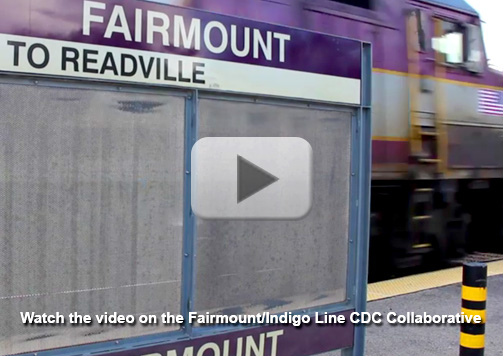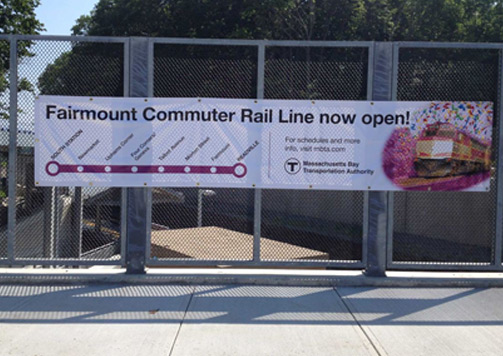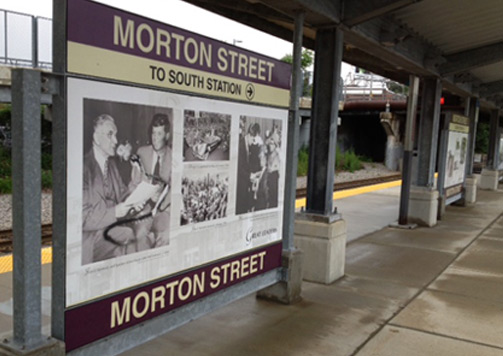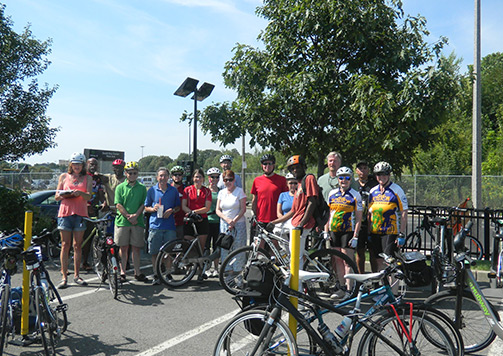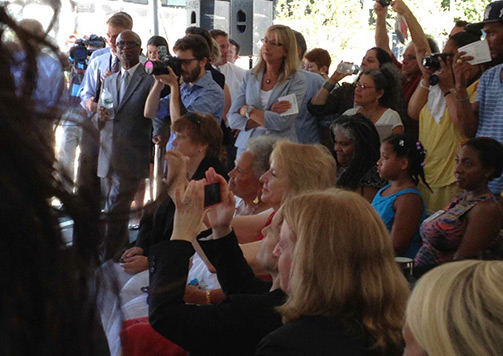Fairmount/Indigo Line Community Development Corporation (CDC) Collaborative
OverviewBased in Boston, Massachusetts, the Fairmount/Indigo Line Community Development Corporation (CDC) Collaborative (The Collaborative) is spearheading a nationally recognized smart-growth, transit-oriented development (TOD) initiative along the 9-mile Fairmount commuter rail line. The members are Dorchester Bay Economic Development Corporation, Codman Square Neighborhood Development Corporation, and Southwest Boston CDC. Members share responsibilities and resources, such as decisionmaking, strategy development, joint fundraising, and consultants. The mission is to seek equity for low- and moderate-income residents in the Fairmount Corridor through affordable housing; excellent public transit; well-paying jobs; locally available goods and services; sustainability innovations; expanded open space, and safe, lively public places enriched through the arts. The goals include 1,200 affordable homes, 500,000 square feet of new commercial space, 800-1,000 new jobs, and a 6-mile Fairmount Greenway with new open space and a bicycling/walking pathway. The Fairmount Corridor—½ mile around the line—has 93,000 predominantly low- and moderate-income and minority residents, including African Americans and Latino, Caribbean, and Cape Verdean immigrants. Nearly half the households earn less than $40,000, well below the City household median income of $50,000; 20% of families in the area live in poverty. The transit campaign is transforming the underused Fairmount Commuter Rail Line into a rapid-transit-like “Indigo” line to serve the local residents who for years relied on long bus rides to commute to work and school. The goals are 4-6 new stations, affordable fares, and more frequent service. The Greater Four Corners Action Coalition launched the transit campaign in 2000. The Collaborative remains close allies with partners, including Dudley Street Neighborhood Initiative, Project RIGHT, Mattapan United, the Conservation Law Foundation, and the Fairmount Cultural Corridor. Thousands of residents have helped shape the vision for the Fairmount Corridor, and over time, to make it a reality. By taking part in project planning, rallies, and meetings with public officials, participants have had a hand in developing station designs and supporting a companion planning process sponsored by the Boston Redevelopment Authority to foster economic development. The Collaborative has leveraged over $100 million in funding since 2011, including a $20.5 million HUD Choice Neighborhood Grant to the City of Boston and Dorchester Bay Economic Development Corporation for transit-oriented development. The Massachusetts Department of Transportation committed $200M for transit upgrades. The City of Boston and private foundations—The Boston Foundation, LISC Boston, the Great Neighborhoods Initiative, TD Charitable Foundation and others—have also provided critical support. Evidence of Impact
Transit: Three stations opened in 2013, and a fourth will begin construction in the fall of 2015. Almost all fares are now $2.10, similar to local rapid transit, and new weekend service has been added. As a result, ridership has increased by 65%.
Transit-Oriented Development Over 1,600 people now have new energy-efficient homes within walking distance of the rail line, split between 20% homeownership and 80% rentals. Over 1,000 affordable/mixed-income units are now completed or in the pipeline; these will ultimately house 3,000 residents. Economic Development and Sustainability Nearly 110,000 square feet of new commercial space is completed or in development, attracting new businesses — including 18 food entrepreneurs at the Bornstein and Pearl Food Small Business Center. Over 760 jobs are being created through construction and business development. A new Jobs Platform set higher goals for minority and women hiring and contracting with minority business enterprises (MBE) and woman business enterprises (WBE); these goals are already being exceeded. The Oasis on Ballou, administered by the Codman Square Neighborhood Development Corporation, is an urban agriculture project that will grow local healthy food and is training formerly incarcerated men of color to farm as a pathway to economic self-sufficiency.
A pilot Solar Energy Generation Network (CSNDC) is redistributing excess energy to local businesses and residents, thereby reducing their energy costs. Some businesses have already seen a 50% energy cost reduction. The Hyde Park Green Team youth, working with the Southwest Boston Community Development Corporation, developed ecological landscaping skills in natural areas and are now using rented goats to remove invasive overgrowth on a future Fairmount Greenway site. Signage for the Greenway biking and walking path will be installed this year, attracting visitors and residents to local businesses. Lessons learned
New Directions
For more information on this innovative initiative, contact Joan Tighe at info@fairmountcollaborative.org or visit the website, www.fairmountcollaborative.org. Watch the video on the Fairmount/Indigo Line CDC CollaborativeClick here to view the press release |


